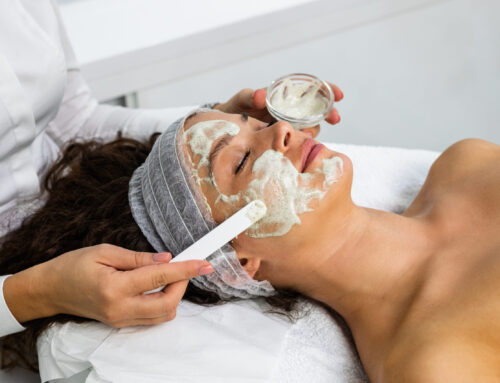Embrace the beauty of age with confidence as we explore the world of Botox and its potential side effects. While Botox has gained popularity as a non-surgical solution to smooth out wrinkles and fine lines, it’s essential to understand its effects fully. Empower yourself with knowledge and make informed decisions, knowing that the skilled professionals in the field can guide you towards a rejuvenated appearance with minimal risks.
Discover a world of youthful possibilities! As more individuals seek the benefits of this cosmetic treatment, it’s natural to wonder about potential side effects. We believe in empowering our audience with the right information so that you can make informed choices regarding your beauty journey.
In this article, we will explore what are the side effects of Botox, both common and rare, and discuss ways to minimize the risks associated with this treatment.
Understanding Botox
Botox is a neurotoxin derived from the bacterium Clostridium botulinum. When injected into specific muscles, it temporarily paralyzes them by blocking nerve signals. This results in a reduction of muscle activity, leading to the smoothing of wrinkles and preventing new lines from forming.
How Botox Works
The neurotoxin in Botox works by targeting the neurotransmitter acetylcholine. Acetylcholine is responsible for muscle contractions, and by inhibiting its release, Botox helps relax the muscles. The procedure is minimally invasive and usually takes only a few minutes.
It helps the body achieve a balance between relaxation and contraction of the muscles. This process helps reduce wrinkles, lines, and other signs of aging. The results usually last from four to six months.
Popular Uses of Botox
Reducing Facial Wrinkles
Botox is most commonly used for cosmetic purposes, primarily to diminish facial wrinkles such as crow’s feet, frown lines, and forehead creases. It provides a smoother and more youthful appearance.
If you want to achieve a more refreshed look, Botox can help you do that. It’s important to note, however, that it will not completely eliminate wrinkles or fine lines; it can only soften them.
Improving Facial Symmetry
Botox can also be used to improve facial symmetry by enhancing and contouring areas of the face. This is especially beneficial for individuals who have uneven facial features, such as a larger forehead or asymmetrical eyes.
Botox can be used to create symmetry in certain areas of the face by relaxing specific muscles, reducing excess skin, and creating natural curves.
Treating Migraines
Apart from its cosmetic uses, Botox is also approved for treating chronic migraines. When injected into specific areas around the head and neck, it can help reduce headache frequency and severity.
Migraines have been the cause of much distress, and Botox can help reduce their intensity. This treatment is approved for use over the age of 18 and has been proven to be safe and effective.
Managing Excessive Sweating
Botox can effectively treat hyperhidrosis, a condition characterized by excessive sweating. Blocking the nerve signals that trigger sweating helps alleviate the discomfort caused by this condition.
If you know someone who suffers from this condition, you should consider recommending Botox, as it can help reduce and provide relief.
The Common Side Effects of Botox
Every beauty treatment comes with associated risks, so it is important to be informed about the potential side effects. Botox has been used for decades, and most people experience minimal to no adverse reactions during or after their treatment. But, as with any medical procedure, there are some common side effects that should be noted before beginning the process.
While Botox is generally safe, some individuals may experience mild side effects. The most common side effects include:
Temporary Bruising
Bruising at the injection site is a common side effect, but it usually resolves within a few days. The risk of bruising increases if you are taking medications or supplements that thin the blood, such as aspirin and ibuprofen.
When this happens, it’s not necessary to seek medical attention; the bruising will usually go away on its own.
Headache
Some people may experience mild headaches after receiving Botox injections, but this side effect is temporary. Headache is a common side effect of Botox injections, and it usually goes away within 24 hours.
If the headache persists or becomes severe, it’s important to contact your doctor immediately.
Allergic Reactions
In rare cases, individuals may be allergic to the ingredients in Botox, leading to allergic reactions like itching or rash. It’s important to inform your doctor if you are allergic to any medication before the procedure.
It’s also important to note that Botox should not be used by people who have certain skin infections. If you’re unsure whether or not you can safely use Botox, consult with a professional for more information.
Muscle Weakness
Temporary weakness of nearby muscles can occur, but this effect is usually mild and self-limiting. If you feel like your facial muscles are not functioning normally, contact your doctor to discuss the matter.
Not many cases of muscle weakness have been recorded, but it’s always better to be safe than sorry.
Eyelid Drooping
In some cases, Botox may cause temporary drooping of the eyelids, but this typically resolves on its own.
When you notice the drooping, contact your doctor immediately. They can provide treatments to reduce or fully eliminate the eyelid droop if necessary.
Flu-like Symptoms
Occasionally, patients may experience flu-like symptoms for a short period following Botox injections. It’s best to rest and take over-the-counter medications to relieve any discomfort.
If the symptoms persist and become more severe, contact your doctor for further advice.
Numbness
Temporary numbness in the treated area is possible but should subside without complications.
These side effects are usually mild and resolve within a few days. However, if any of these symptoms persist, it’s important to contact your healthcare provider immediately.
Taking Precautions
It’s essential to take all the necessary precautions before undergoing Botox treatment. Make sure to choose a qualified and experienced professional who is certified in administering Botox injections, as this will reduce the risk of any potential side effects. Additionally, provide your medical history and ask questions during the consultation process so that you have a full understanding of how the procedure works and what to expect.
Rare but Serious Side Effects
Botox is an effective treatment for reducing wrinkles and improving facial symmetry, but it’s important to be aware of the potential risks associated with this procedure.
While uncommon, some individuals may experience more severe side effects, which require immediate medical attention. These include:
Difficulty Swallowing or Breathing
In rare instances, Botox can spread beyond the injection site and cause difficulty swallowing or breathing. If experienced, medical help should be sought immediately.
Side effects of this extreme are rare, but it’s important to be aware of the risk.
Vision Problems
In some cases, Botox can affect the muscles around the eyes, leading to vision disturbances. Not many have experienced this side effect, but you should be aware of it for your safety.
If you experience any vision changes after treatment with Botox, contact your doctor right away.
Bladder Control Issues
Botox injections for bladder issues may lead to temporary bladder control problems. In rare cases, the symptoms may become more severe and require medical attention.
If you experience any of these effects, make sure to consult your doctor for advice immediately.
Botox has been used as a cosmetic treatment for decades, and it is generally safe when administered correctly. As long as you take the necessary precautions and are aware of the potential risks, you should be able to enjoy the benefits of this treatment safely. However, if any of the above side effects occur, it’s essential to seek medical advice as soon as possible.
Factors Influencing Side Effects
Several factors can influence the side effects associated with Botox injections; if you’re new to this procedure, it’s important to understand how these factors may affect its outcome.
The Injection Site
The nature and severity of side effects can depend on the injection site. Injections near the eyes or mouth have a higher risk for complications.
While injections in these areas can yield excellent results, it’s important to be aware of the potential risks.
Dosage
Receiving an excessive amount of Botox injections carries a greater risk of side effects. This is due to the higher concentration of the medication, which can increase its effects and potentially cause unwanted reactions.
It’s also important to remember that too little Botox may not yield the desired results. For this reason, it’s essential to go to a doctor qualified in administering injections for more precise measurements.
Frequency of Injections
When administered too frequently, Botox can cause undesirable effects. The patient may experience headaches, weakness in the treated area, or other side effects that can be difficult to cope with.
It is generally recommended to wait at least three months between treatments.
Final Thoughts on Side Effects of Botox
When undergoing Botox injections, it’s important to be aware of the potential side effects and take necessary precautions. Make sure to research qualified professionals who will provide a safe and effective treatment with minimal risks.
Provide as much information as possible during your consultation, such as any allergies or existing medical conditions. This way, you can help ensure that the procedure is tailored for maximum safety and effectiveness.
Dosage and Injection Technique
The amount of Botox administered and the injection technique can affect the outcome and potential side effects.
To minimize the risk of any adverse reactions, it’s important to select a qualified and experienced professional who is trained in administering Botox injections. The doctor should also consider factors such as your medical history and desired outcome before deciding on the optimal dosage for your needs.
Individual Sensitivity
Individual reactions to Botox can vary based on genetics and overall health. Some patients may be more sensitive to the medication, leading to an increased risk of side effects.
It’s important to tell your doctor about any pre-existing conditions or allergies before beginning treatment. This will help reduce the chances that you may experience unwanted reactions to Botox injections.
Pre-existing Medical Conditions
Certain medical conditions may increase the risk of experiencing side effects. When you have existing health conditions, it is essential to be particularly vigilant when undergoing Botox treatment and discuss your options with a qualified professional.
If you have any underlying medical issues that may increase your risk for complications, make sure to consult your doctor before starting the procedure. This will help ensure that the treatment is tailored to your needs and provide maximum safety and effectiveness. It’s also important to discuss any other medications you are taking that may interact with Botox.
Interactions with Other Medications
Patients should disclose all medications they are taking to avoid potential interactions. Being honest about your medications and health conditions can help minimize risk, ensure the treatment is tailored to your needs, and provide maximum safety during the procedure.
It’s important to remember that not all interactions between Botox and other drugs are known; therefore, it’s essential, to be honest with your doctor about any medications you’re taking before undertaking a Botox treatment. This
Minimizing the Risks of Botox
Achieving your desired results with Botox injections is possible without having to worry about side effects. To minimize the risk of any undesirable reactions, follow these tips:
Choosing a Qualified Provider
Select a reputable and experienced medical professional to administer Botox injections. Our body is a sensitive part of us, so it’s important to entrust it to someone who is knowledgeable and experienced in this type of treatment.
Disclosing Medical History
Inform the provider about any pre-existing medical conditions or allergies. There is nothing wrong with asking questions about the procedure. This will help ensure that the treatment is tailored to your individual needs and provide maximum safety during the procedure.
Following Post-Injection Instructions
Adhere to the post-treatment instructions provided by the medical professional. It typically involves avoiding strenuous activities and applying cold compresses to the areas injected with Botox.
These steps will help minimize the risk of post-injection complications and ensure that you get the results you desire with minimal risks. Do not hesitate to contact your doctor if any unusual symptoms appear after treatment. With the right precautions in place, you can enjoy the benefits of Botox injections without having to worry about any unpleasant side effects.
How Long Do Side Effects Last?
Most Botox side effects are temporary and should resolve within a few days to a few weeks. However, in rare cases, certain side effects may persist for a longer duration. For this reason, it’s important to contact your healthcare provider if you experience any unusual or persistent symptoms. Additionally, patients should not receive additional injections until the side effects have completely dissipated.
Conclusion
Botox is a popular and effective treatment for reducing wrinkles and addressing various medical conditions. While generally safe, it is essential to be aware of the potential side effects associated with the procedure. Most side effects are mild and temporary, but individuals should seek immediate medical attention if they experience any severe or concerning symptoms.
Discover the wonders of Botox with confidence and safety at Skin & Soul Med Spa! Our expert team of practitioners is well-versed in the art of cosmetic enhancements, ensuring a smooth and informed journey. Experience the transformative power of Botox while entrusting your appearance to our skilled professionals who prioritize your well-being above all. Unleash the best version of yourself and embrace the ageless beauty that awaits you at Skin & Soul Med Spa – where radiant skin and soulful confidence converge. Contact us now!
FAQs: What are the Side Effects of Botox?
Is Botox safe for everyone?
Botox is generally safe for most individuals; however, it may not be suitable for those with certain medical conditions or allergies. Consult a qualified medical professional before undergoing treatment.
Are the results of Botox immediate?
The initial effects of Botox may become noticeable within a few days, but the full results usually take up to two weeks to develop.
Can Botox be used to treat all types of wrinkles?
Botox is most effective in treating dynamic wrinkles, which are caused by repetitive muscle movements. It may not be as effective for static wrinkles caused by sun damage and aging.
How often should I get Botox injections?
The frequency of Botox treatments varies for each individual and depends on the specific treatment area and desired results. On average, Botox injections are repeated every three to four months.
Can pregnant or breastfeeding individuals receive Botox injections?
It is not recommended for pregnant or breastfeeding individuals to undergo Botox treatments due to potential risks to the baby. Always consult a healthcare professional for guidance.
How Long Does Botox Last?
Botox typically lasts for about 3 to 4 months before its effects gradually diminish, necessitating a follow-up treatment for maintained results. Individual variations may occur, but most clients find this duration to be consistent. If you want to learn more about how long does Botox last, check out our blog page now!
Sign Up NOW and Get a FREE Consultation





